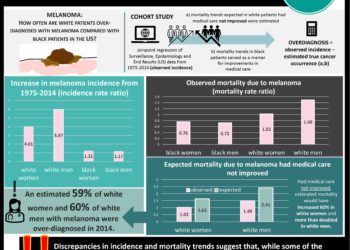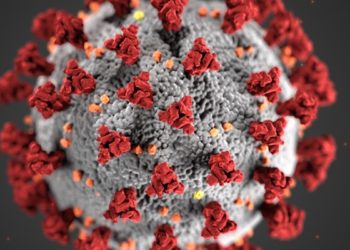Reporting of maltreatment for prenatal exposure similar among racial groups
1. Black and Hispanic infants prenatally exposed to substances were not reported to child protection authorities at higher rates than white infants.
2. Any infant with in utero substance exposure was significantly more likely to be reported to child protection when compared to unexposed infants.
Evidence Rating Level: 2 (Good)
Study Rundown: Black infants have a higher rate of substantiated child maltreatment claims than white or Hispanic infants. This discrepancy may be due to a multitude of factors, including socioeconomic status and variability in reporting due to race. It is challenging to investigate the role that bias may play in initial reporting of child maltreatment, but the data surrounding prenatal substance exposure and subsequent reporting to child protection authorities provides an opportunity to evaluate racial bias in reporting. In this study, authors examined reporting of child maltreatment for prenatal substance exposure among black, Hispanic and white infants. The highest prevalence of substance exposure was found among black infants, followed by white and Hispanic infants. In an adjusted multivariate analysis, black and Hispanic infants exposed to substances were not reported to child protection authorities at significantly different rates to white infants. This study is particularly robust as it used linked data sets: the same cohort of infants was compared between hospital, child maltreatment and public health birth databases. However, it did not control for the possibility of bias in the initial screening of infants for exposure and examined only Californian infants in 2006. While these findings may be reassuring, physicians should remain vigilant against unconscious racial and ethnic bias in both testing and reporting of maltreatment.
Click to read the study, published today in Pediatrics
Relevant Reading: The prevalence of illicit-drug or alcohol use during pregnancy and discrepancies in mandatory reporting in Pinellas County, Florida
In-Depth [retrospective cohort study]: A total of 474 071 black, Hispanic and white infants born in California in 2006 were individually linked across birth records, hospital discharges and child protection reports. Authors examined the likelihood of a child maltreatment report in the first 28 days of life based on maternal race or ethnicity (i.e., black, Hispanic or white) and a diagnosis of in substance exposure (either in the maternal or child medical record). Adjustments were made for various covariates including maternal age, insurance, prenatal care, birth order and infant birth weight. After controlling for covariates, infants with substance exposure were more likely to be reported to authorities (RR 10.9, 95%CI: 10.03-11.74). There was no significant difference in the rate of reporting families of black or white infants with exposure to one or multiple substances (RR 0.96, 95%CI: 0.86-1.06; RR 0.91, 95%CI: 0.78-1.05, respectively). Similarly, there was no significant difference in the adjusted rate of reporting between Hispanic and white infants with exposure to one or multiple substances (RR 0.93, 95%CI: 0.85-1.01; RR 0.90, 95%CI: 0.80-1.00). However, in data not adjusted for socioeconomic status and pregnancy risk factors, black and Hispanic infants were reported at significantly higher rates than white infants (RR 1.15, 95% CI: 1.08–1.21; RR 1.13, 95% CI: 1.08–1.18).
Image: CC/Wiki/Infantcentre
©2016 2 Minute Medicine, Inc. All rights reserved. No works may be reproduced without expressed written consent from 2 Minute Medicine, Inc. Inquire about licensing here. No article should be construed as medical advice and is not intended as such by the authors or by 2 Minute Medicine, Inc.


![Small-molecule inhibitor may enhance recovery after brain hemorrhage [PreClinical]](https://www.2minutemedicine.com/wp-content/uploads/2016/03/800px-Intracerebral_heamorrage-350x250.jpg)




